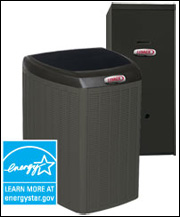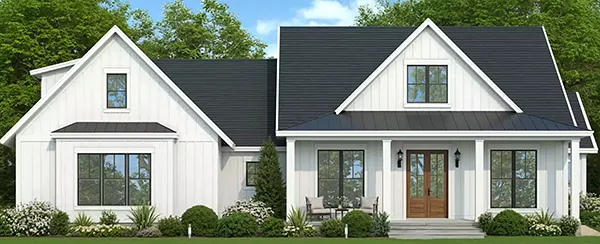The Most Innovative & Economical Home Comfort Systems

When purchasing a new (HVAC) heating, ventilating & air conditioning system, remember that high efficiency levels begin with ENERGY STAR®. Whether you're searching for a new heat pump, furnace, or other heating and cooling equipment, ENERGY STAR® has set energy efficiency specifications to help you save on energy bills and improve the comfort level in your home. Common HVAC systems include furnaces, boilers, heat pumps and central air conditioners.
Furnaces are the most commonly used residential heating system in the United States, running most often on gas, but sometimes on fuel oil or electricity, and deliver their heat through a duct system. ENERGY STAR® qualified oil and gas furnaces use advanced technology to deliver higher efficiency. They have an annual fuel utilization efficiency (AFUE) rating of 83 percent or higher, making them 15% more efficient than standard new furnaces.
A boiler heats your home by burning gas or fuel oil to heat water or steam that circulates through radiators, baseboards, or radiant floor systems. Boilers do not use a duct system. Boilers that have earned the ENERGY STAR® have higher AFUE ratings and use about 5% less energy than standard boilers. Features that improve boiler efficiency include electronic ignition, which eliminates the need to have the pilot light burning all the time, and new technologies that extract more heat from the same amount of fuel.
Both ENERGY STAR® furnaces and boilers are designed to reduce the risk of back drafting harmful carbon monoxide exhaust into your home.
ENERGY STAR® qualified central air conditioners have a higher SEER than today's standard models. SEER, the Seasonal Energy Efficiency Ratio, measures energy efficiency - the higher the SEER, the greater the level of efficiency. Since size and proper installation of a central air conditioning system are critical to energy efficiency and home comfort, it is important to hire a qualified technician.
Heat Pumps use a refrigeration cycle to heat and cool your home. In the warmer months and climate, a heat pump functions exactly like an air conditioner — extracting heat from the inside to the outside. The resulting cooled and dehumidified air is then distributed throughout the home in a duct system. In the winter, heat pumps operate in reverse — extracting heat from the air, ground or water source outdoors and transferring it inside.
You'll find plenty of resources and tips to help create a safe, comfortable and efficient heating and cooling system at
www.energystar.gov.
Design Tip
Equipment sizing affects both the comfort of your home, and your ongoing costs to operate your new furnace or air conditioner. If the equipment is too small, it won't adequately heat or cool you house. If it is too large, it will cycle on and off more often than necessary. This cycling is inefficient and will unnecessarily increase the cost of running the unit. You want to make sure that your furnace or air conditioner is the right size. The only accurate way to determine the appropriate size is to perform a load calculation.




 When purchasing a new (HVAC) heating, ventilating & air conditioning system, remember that high efficiency levels begin with ENERGY STAR®. Whether you're searching for a new heat pump, furnace, or other heating and cooling equipment, ENERGY STAR® has set energy efficiency specifications to help you save on energy bills and improve the comfort level in your home. Common HVAC systems include furnaces, boilers, heat pumps and central air conditioners.
When purchasing a new (HVAC) heating, ventilating & air conditioning system, remember that high efficiency levels begin with ENERGY STAR®. Whether you're searching for a new heat pump, furnace, or other heating and cooling equipment, ENERGY STAR® has set energy efficiency specifications to help you save on energy bills and improve the comfort level in your home. Common HVAC systems include furnaces, boilers, heat pumps and central air conditioners.

